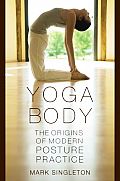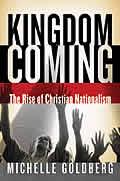
My decision to embark on
The Goddess Pose: The Audacious Life of Indra Devi, the Woman Who Helped Bring Yoga to the West, began with a question.
I'd been practicing yoga since my mid-20s, when I spent six months in India. Returning to New York, I launched a career as a political journalist, regularly covering the depredations of the American right. I was spending much of my life immersed in a world of paranoia and rage, and yoga became my refuge. But as much as I loved it, I strongly suspected that some of what I was hearing in yoga classes was bullshit. Despite rhetoric about yoga's ancient pedigree and spiritual authenticity, I knew that the sweaty, fast-paced style I was practicing in Brooklyn is hard to find in India, at least outside of tourist zones and rich, Westernized urban enclaves. The yogis I saw in India were gaunt, dreadlocked male mendicants performing torturous austerities — lying on beds of nails, standing on one leg for days on end — meant to obliterate their links to ordinary life. How had their techniques morphed into a method for stressed-out modern women to manage their lives more effectively? I wanted to know the real story behind what I was doing in all those classes. What exactly was this thing called yoga?
One day, procrastinating at work by trying to find out, I came across Indra Devi's New York Times obituary. "Indra Devi, the daughter of European nobility who introduced the ancient discipline of yoga to the Kremlin leadership, Hollywood stars like Gloria Swanson, and even students in India, died on Thursday in Buenos Aires," it began. "She was 102." The Goddess Pose, the book I ended up writing about Devi, isn't just about yoga. Her story is that of an adventurous woman gallivanting through the 20th century, from the Russian Revolution to the cabarets of Weimar Berlin to the heyday of Hollywood and beyond. Still, in researching The Goddess Pose, I learned what an enormous gap there is between yoga as I knew it and yoga as understood by scholars.
Yoga as a system of physical fitness is, it turns out, a fairly modern phenomenon. "In spite of the immense popularity of postural yoga worldwide, there is little or no evidence that asana (excepting certain seated postures of meditation) has ever been the primary aspect of any Indian yoga practice tradition," writes Mark Singleton in Yoga Body: The Origins of Modern Posture Practice. (Asanas, for the uninitiated, are yoga poses.) "The primacy of asana performance in transnational yoga today is a new phenomenon that has no parallel in premodern times." Scholars of Sanskrit and Hinduism who first encounter Western asana-based yoga are often puzzled as to where it came from. And serious yoga students who embark on an academic study of their practice are regularly surprised to find that there's no textual record of many of the poses they'd learned.
 If few Westerners outside the academy are aware of this discontinuity, it's partly because the word yoga is so labile, creating a false sense of continuity among many distinct practices. As the great scholar of religion Mircea Eliade writes, "The word yoga serves, in general, to designate any ascetic technique and any method of meditation." When people say "yoga," they can be talking about many different things. And they were not, historically, talking about postures at all.
If few Westerners outside the academy are aware of this discontinuity, it's partly because the word yoga is so labile, creating a false sense of continuity among many distinct practices. As the great scholar of religion Mircea Eliade writes, "The word yoga serves, in general, to designate any ascetic technique and any method of meditation." When people say "yoga," they can be talking about many different things. And they were not, historically, talking about postures at all.
Western yoga teachers sometimes refer to The Yoga-Sutra of Patanjali, a 2000-year-old Sanskrit text, as the wellspring of the practice. But the sum total of Patanjali's teachings about yoga is this, in scholar Georg Fuerstein's translation: "The posture [should be] steady and comfortable. [It is accompanied] by the relaxation of tension and the coinciding with the infinite [conciousness-space]."A clear yogic focus on the body, and on techniques for preserving it, emerged in medieval times. (Hatha yoga, as the physical side of yoga is called, was originally the name of a discipline practiced by an order of 12th-century ascetics known as the Kanphata yogis.) But even medieval yoga texts don't mention many of the postures that are staples of modern yoga classes — there are no sun salutations, no warrior poses, no downward dogs or chaturangas.
It turns out that the physical practice now known as "yoga" in the West was largely created by Indian nationalists in the early 20th century. Seeking an authentically Indian version of what was then called "physical culture" — basically, physical fitness — they drew on medieval hatha yoga and traditional Indian wrestling exercises, but also on British army calisthenics and, according to Singleton, on the once-famous work of a Danish gymnastics trainer named Neils Bukh. In The Yoga Tradition of the Mysore Palace, N. E. Sjoman describes the yoga of Tirumalai Krishnamacharya — Devi's teacher and one of the most influential yoga masters in history — as a "syncretism," borrowing techniques from a gymnastic text "but presenting it under the name of yoga."
It's easy enough to see why the story of this synthesis hasn't made it into the mainstream Western yoga world. Many people turn to yoga because they're seeking something more transcendent than ordinary exercise. Part of the reason I came to love it is because it offers some of the consolations of religion without the necessity of faith. In yoga there is ritual and community. There is relief in stepping outside the rush of daily life and quieting the churning mind. Sometimes, particularly during a vigorous, flowing Sunday morning class with soaring music, my habitual self-consciousness slips away and I am briefly ecstatic, with an afterglow of peaceful energy and optimism. I've visited many American megachurches as a reporter, and yoga is probably as close as I'll ever come to understanding, in a visceral way, the joy that the dancing, laughing evangelical Christians find worshipping in them. In both cases, the sense of being connected to something ancient and sublime imbues the physical experience with meaning. If you know the truth about yoga, some of that might be lost.
 Yet it doesn't have to be, because rituals needn't be ancient to be meaningful. In this sense, the megachurches are actually instructive. There is, obviously, an immense chasm between Christianity as conceived by millenarian dissidents during the Roman Empire and the deeply American doctrines currently preached in warehouse-sized auditoriums with rock bands and light shows. I have no sympathy for the sort of politics that predominate in these places — my first book was called Kingdom Coming: The Rise of Christian Nationalism — but it's clear that the attendees experience something personally powerful. Similarly, the Reform Judaism I grew up with originated in the 1800s in Germany; it has far more to do with the values of the European enlightenment than with the barbarous prohibitions of Leviticus. It would never occur to me, though, to say that the faith of the majority of American Jews isn't "real" Judaism. Religions evolve and develop cultural meanings that would have been inexplicable to their creators.
Yet it doesn't have to be, because rituals needn't be ancient to be meaningful. In this sense, the megachurches are actually instructive. There is, obviously, an immense chasm between Christianity as conceived by millenarian dissidents during the Roman Empire and the deeply American doctrines currently preached in warehouse-sized auditoriums with rock bands and light shows. I have no sympathy for the sort of politics that predominate in these places — my first book was called Kingdom Coming: The Rise of Christian Nationalism — but it's clear that the attendees experience something personally powerful. Similarly, the Reform Judaism I grew up with originated in the 1800s in Germany; it has far more to do with the values of the European enlightenment than with the barbarous prohibitions of Leviticus. It would never occur to me, though, to say that the faith of the majority of American Jews isn't "real" Judaism. Religions evolve and develop cultural meanings that would have been inexplicable to their creators.
Postural yoga, of course, is a set of techniques, not a religion. Still, there are myths around it, and looking beyond them carries the risk of disillusionment. For me, though, learning about the origins of the practice actually helped resolve the anxiety I had about its authenticity. The fact that it has long been a cross-cultural mash-up means there's no need to think about it in terms of purity and corruption, or to feel guilty about adapting it to modern needs. What matters is that it works, even if the stories we tell about it are just that.